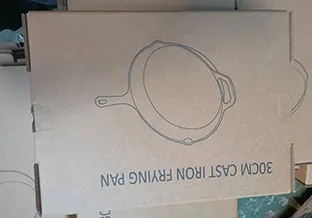
The Benefits and Uses of Cast Iron Cookware in Your Kitchen
The Art and Science of Cooking with Cast Iron
Cast iron cookware has been a staple in kitchens for centuries, cherished for its exceptional heat retention and even cooking properties. Whether you're a seasoned chef or a novice in the kitchen, understanding the nuances of cooking with cast iron can elevate your culinary creations. In this article, we will explore the benefits, care, and versatility of cast iron cooking.
The Advantages of Cast Iron Cookware
One of the most significant advantages of cast iron cookware is its superior heat retention. This means that once it’s heated, a cast iron skillet can maintain a consistent temperature, making it ideal for tasks that require precise cooking, such as searing meat or frying. Furthermore, cast iron can withstand extremely high temperatures, allowing for techniques like stovetop-to-oven cooking.
Another key benefit is the natural non-stick surface that develops over time with proper seasoning. When you season cast iron—applying layers of oil and heating it—you create a protective layer that not only prevents food from sticking but also adds flavor to your dishes. This is especially advantageous for cooking foods that tend to stick, like eggs or pancakes.
Moreover, cast iron cookware is incredibly versatile. From frying and baking to sautéing and roasting, these pans can handle it all. They can move seamlessly between the stovetop, oven, and even campfires, making them perfect for both everyday cooking and outdoor adventures.
Caring for Your Cast Iron
To truly enjoy the benefits of cast iron cooking, it is essential to take good care of your cookware. While it may seem intimidating at first, maintaining a cast iron skillet is straightforward.
cast iron cooking

1. Seasoning Before using a new cast iron skillet for the first time, it’s essential to season it properly. This generally involves washing it with warm, soapy water, drying it thoroughly, and applying a thin layer of vegetable oil before placing it upside down in a preheated oven for an hour. This process creates a non-stick surface and helps prevent rust.
2. Cleaning After each use, avoid soap unless absolutely necessary, as it can strip the seasoning. Instead, use hot water and a stiff brush to clean your skillet. In some cases, you may find that simply wiping it out with a paper towel suffices. For stubborn residues, a mixture of coarse salt and oil can act as a natural abrasive, helping to scrub away stuck-on food without harming the seasoning.
3. Drying and Oiling After washing, it's important to thoroughly dry your skillet to prevent rust. You can place it on low heat for a few minutes to ensure all moisture evaporates. Once dry, apply a light coat of oil to maintain the seasoning and keep it resilient for future use.
Versatility in the Kitchen
Cast iron cookware shines in various cooking scenarios. Cooking a perfect steak? Start with a hot skillet, sear both sides, and then finish it in the oven for consistent doneness. Want crispy cornbread? Pour your batter into a preheated cast iron skillet to achieve that golden crust. The possibilities are endless.
Moreover, cast iron isn’t merely limited to savory dishes. It excels in baking as well. From muffins to focaccia, the heat retention helps create beautifully risen and browned baked goods.
Conclusion
In conclusion, cooking with cast iron is an art that combines tradition and science. The advantages of cast iron cookware, such as heat retention, versatility, and the natural non-stick surface through proper seasoning, make it an invaluable addition to any kitchen. By taking care of your cast iron skillets, you can enjoy decades of delicious meals, while also honoring a time-honored cooking method that has stood the test of time. So, whether you're a beginner or a culinary expert, embrace the charm of cast iron cooking and elevate your dishes to new heights.
-
Season Cast Iron Perfectly with GPT-4 Turbo TipsNewsAug.01,2025
-
High Quality Cast Iron Cookware - Baixiang County Zhongda MachineryNewsAug.01,2025
-
Premium Cast Iron Pan: Durable & Perfect HeatNewsAug.01,2025
-
High Quality Kitchen Durable Black Round Cast Iron Cookware Pancake Crepe Pan-Baixiang County Zhongda Machinery Manufacturing Co., Ltd.NewsAug.01,2025
-
Cast Iron Cookware - Baixiang County Zhongda Machinery | Nonstick, Heat ResistanceNewsAug.01,2025
-
High Quality Kitchen Durable Black Round Cast Iron Cookware - Baixiang County Zhongda Machinery | Non-Stick, Heat Retention, DurableNewsJul.31,2025


